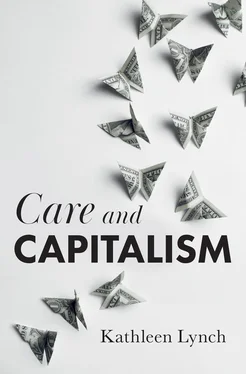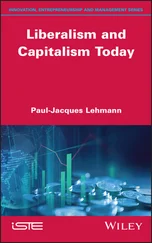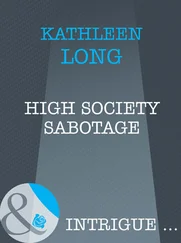Bureaucracy, Hierarchy and the State
While hierarchical divisions are endemic to the organization of capitalism, hierarchical organization is not its prerogative. Bureaucracies are means for organizing power relations, that are constitutionally hierarchical, and for those who exercise control within them, they are ‘a power instrument of the first order’ (Gerth and Wright Mills 1958: 228). Weber goes so far as to say that ‘where the bureaucratization of administration has been completely carried through, a form of power relation is established that is practically unshatterable’. He also claims that bureaucratization is ‘often carried out in direct alliance with capitalist interests’ (Gerth and Wright Mills 1958: 230).
We know from anthropological research that for 99 per cent of their history, humans lived in small foraging groups where there was no organizational capacity and ill-defined leadership roles; they were largely unstratified, fluid in form and non-violent (Schoenhals 2019). There were and are societies that manage their conflicts and differences without violence. One of the features of more peaceful, non-violent societies is that they are generally more gender egalitarian, with women playing key roles in decision-making (Malešević 2010a: 298). It was the emergence of sedentary social organizations, especially the establishment of state power (Carneiro 1970) and related bureaucracies, that has generated both deep gender stratifications and organized warfare (Malešević 2010a: 295–6).
But modern life is lived within the frame of increasingly large bureaucratic organizations, be these public or private services, business corporations, educational institutions and/or non-governmental and community organizations. While there are many polities, entities that have authority over a specific social group or territory or set of institutions that are not states, including organized religions, hegemons and global institutions (Walby 2009), the state remains a powerful polity in determining the outcomes of people’s lives. And in the twenty-first century, it is men who control the means of decision-making and meaning-making within most states (and within all major globalized religions, and most global political and economic institutions).
The subordination of women has been enabled and consolidated by the development of bureaucratized organizational power (Acker 1990, 2006), including the organizational power of the state. While women can and do use the machinery of the state to fight for their rights, it is through the state that women’s subordination is often consolidated in law and regulations, rather than being simply a matter of habit and cultural convention (Walby 2009). The very idea of the ‘social contract’, a cornerstone of democratic thinking, was based on the deeply gendered concept that the civil government replaced the king/father as the protector of the nation (Pateman 1988). This assumes that the protector (the state) is a father figure, an abstract, disinterested player who will always act in the interests of his dependents, who are first defined as women and children. The logic of the state as ‘protector’ enjoins a gendered discourse of care and concern to rationalize power, and oftentimes the abuse of power. The metaphor of the protective father is a political ruse granting legitimacy to the exercise of power and control, though it may be arbitrary and abusive.
There are several ways in which male control of state institutions impact on women as primary carers, both institutionally and ideologically. As bureaucratic entities designed and planned by men, state organizational practices are constitutionally masculine in character. They are governed through gendered concepts of production and reproduction, and gender-configured in terms of recruitment and promotion, the division of labour and systems of control. The state does not always have to operate explicitly in men’s interests to be patriarchal because it is shaped by masculine interests and practices. Multiple dimensions of socially constructed masculinity have historically shaped the multiple modes of power circulating through the domain called the state (Brown 1995: 177). The masculinist character of the state is reflected in the generalized lack of interest in, and commitment to, childcare; in the declining investment post-austerity in many welfare states in basic infrastructural public (care) services; in the adversarial approach of parliamentary debates; and in the timing of political meetings and assemblies, most of which assume that people are not tied to time by care commitments.
Because domain assumptions influence our paradigmatic assumptions (Gouldner 1970) at an ideological level, intersecting identities of social class, race, age, gender and marital and family status influence paradigmatic perspectives: how people live, who they live with, what they read, listen to, see and know help make up their world view. What they are hardwired to see, feel and notice about the world and its politics is highly contingent and driven by strong emotions (Ahmed 2004), not necessarily by reason (Lakoff 2008). As men do not inhabit the world in the same way that women do in care terms (Hochschild and Machung 1989), and as they are much less likely to be hands-on carers (Oxfam 2020), their domain assumptions about care work, paid and unpaid, are fundamentally different from those of women (Hanlon 2012; Cederström 2019). As ‘care commanders’ (Lynch, Baker and Lyons. 2009: 132–57), men’s political paradigms are less likely to be informed by everyday experiences of attending to the ongoing corporeal and emotional needs of dependent others. As men do not tend to carry the family care-map around in their heads every day, this impacts on their decision-making. Their underlying paradigmatic assumptions are framed by their own relatively, and sometimes entirely, care-free experiences. Nowhere was this more evident than during the Covid-19 pandemic when male-dominated governments closed crèches and primary schools in many countries with no plan for childcare, forgetting that someone had to care for children if people (especially health care staff) were to work. The net effect of this was a drop in employment rates for women in seventeen of the twenty-four Organisation for Economic Co-operation and Development (OECD) countries that reported a drop in employment due to the pandemic; care-work commitments contributed greatly to women withdrawing from the labour market during the pandemic of 2020–21. 12
Women in Bureaucratic Organizations
Organizations are neither gender neutral (Acker 1990; Witz and Savage 1991; Britton 2000) nor race neutral (Acker 2006; Ahmed 2012). The seemingly ‘disembodied, universal worker’ is in reality a male and a White worker, especially at senior levels; women and men whose skin is Brown or Black are judged by their degree of adherence to the prevailing organizational norm for any given position that has been White-male-dominated and male-defined historically (Joseph 2018). Those who enter positions within organizations do not do so, therefore, on their own terms; they may negotiate, but positions have a status and identity that predate and post-date the potential postholders, and senior posts are coloured-coded White and masculine in White-dominated societies.
While power may not now be entirely in male hands in the twenty-first century in all countries, or in all organizations, men exercise a controlling interest in all the major organizational centres of power. Men have claimed organizational power for themselves at senior levels, be it in business, culture, sport, the arts or the media (Kanter 1977; Collinson and Hearn 1996). Even when some women are present at senior levels, men, being in the majority, exercise the power of veto in most political, cultural and economic institutions.
Читать дальше












